Story highlights
Michael Somsan, a veteran, was shot in the head in 1995, leaving him blind
He is one of five physically challenged athletes in Saturday's Ironman World Championship
A full Ironman triathlon is grueling, consisting of a 2.4-mile swim followed by 112 miles on a bicycle and then a 26.2-mile run. All of this is completed in one day, with no stops in between.
Now imagine doing that without being able to see.
Veteran Michael Somsan was shot in the head in 1995, leaving him completely blind. But despite his circumstances, Somsan, now 46, always kept hopes alive of one day completing the most famous triathlon of all: The Ironman World Championship in Kona, Hawaii.
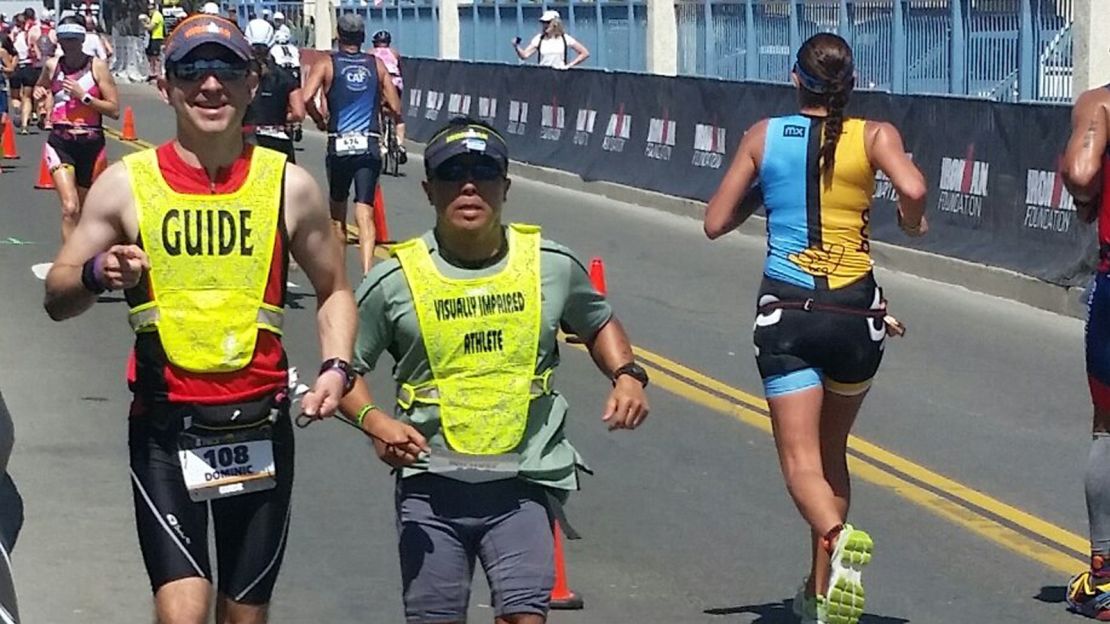
The location has a special significance for Somsan, a single dad who lives in Gilbert, Arizona. His high school and college years were spent in Hawaii, where he was active surfing, fishing, swimming, running, and cycling. His family lives on Oahu.
“For me, it almost takes me back to when I was younger, when I was looking at the Ironman and could see all these wonderful athletes doing it, and now I’m here doing this,” Somsan said in a telephone interview with CNN last month. “So it takes you back to my youth, takes me back to memories of Hawaii, and of course my family is there.”
There’s something else, though, something much deeper. Discovering the Ironman gave Somsan the courage to live, and crossing that finish line will signify the end of a long, emotional journey for the entire family.
“I know for them, when I first got injured, they just didn’t know what to do,” Somsan said. “I didn’t know what to do. Everything I was afraid to do. I was afraid to do anything, much less an Ironman. So to do this, I don’t know how to describe it. It’s like climbing Mount Everest.”
Fateful night in 1995
This wasn’t the future Somsan envisioned. His passion was in the US military.
With his family displaced by the Vietnam War, a 5-year-old Michael moved to the US from Laos. He lived with his uncle, a colonel, and his aunt before his parents arrived. When his parents couldn’t afford to send him to college, he decided to join the service to pay for it. He found that he loved being around new cadets and relished the environment.
In 1995, when he was 24, Somsan was a first lieutenant in the US Army and was engaged to be married. He was enjoying his career.
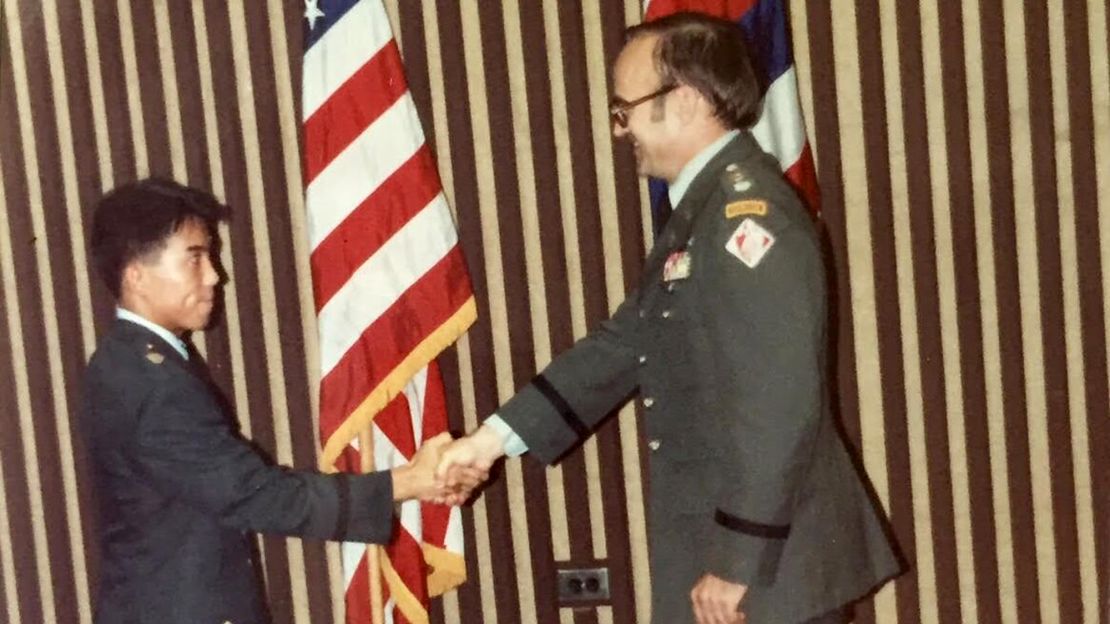
“I had a full life ahead of me,” Somsan said. “I didn’t think I was going become disabled and go this other different route.”
It all changed one night, while Somsan was visiting a friend’s home in Austin, Texas.
There was a fight outside. By the time Somsan reached the parking lot and headed toward the chaos, it was an all-out brawl.
“There were guys kicking my friend on the ground, like three or four of them, and I was like, ‘What is going on here?’” Somsan said. “So then I got into the fight, and it just escalated from there.”
According to Somsan, one of the brawlers had a sword and started chasing Somsan’s friend down the street. Somsan got into his Jeep to go help his friend. But then he heard words from another man on the scene.
“Don’t shoot him.”
The “him” referred to Somsan. And when Somsan looked up, a man was standing right there, at the car’s left front wheel, pointing a gun at him.
Then he fired.
‘You’re blind’
“I’m surprised my head didn’t come off,” Somsan said. “When they pulled me out of my Jeep, I was still conscious. When they took me to the ER, I was still conscious. I remember they were trying to get me to stay alert, and eventually, I just couldn’t. I just passed out because I was just bleeding a lot.”
Somsan went into a coma and underwent numerous surgeries. Weeks later, he woke up. He knew he was in the hospital. But it was dark.
“I had IVs in my arms, and I had tubing in my nose, and I had gauze and bandages all over me,” Somsan said. “So I knew that. I kind of remembered that something had happened to me.
“And that’s when I kind of like felt my eyes and just kind of lifted the gauze off my eyes. …I said, ‘Hey, what’s going on?’ and I said, ‘Hey, turn on a light.’ And that’s when the nurse said, ‘You’re not going to see anything. You’re blind.’”
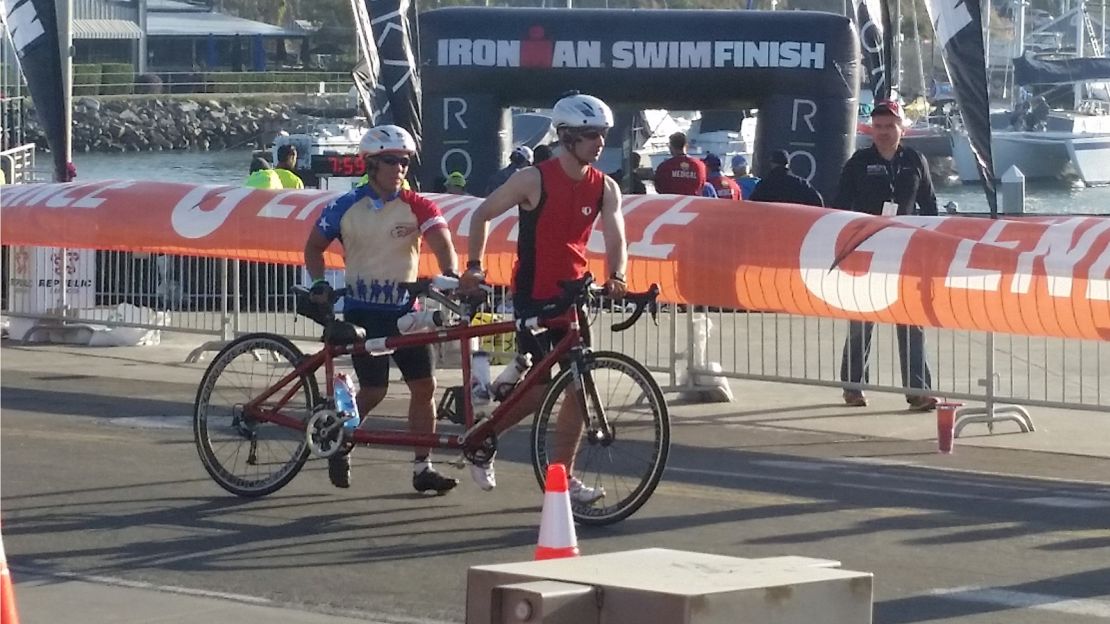
Somsan said he later learned the man who shot him was a student who also was a foreign national. But he was never brought to justice. When the man was released on bail, he absconded.
That was partial motivation for Somsan, now a single dad of two daughters, to become an attorney. But he also had another goal.
“Ironman has been a part of my life ever since I lived in Hawaii,” Somsan said. “So I’ve seen what the Ironman looks like in terms of competition and just how grueling it is. And I’ve always been fascinated with the Ironman, but my life just got busy, and I never got back to it. But one day, I will go back.”
A healing journey
When Somsan started doing triathlons, he did something in 2014 that he now calls “really dumb.” He completed a sprint triathlon (0.5-mile swim, 12.4 miles on the bike and a 3.1-mile run), an Olympic-distance triathlon (0.93 miles/24.8 miles/6.2 miles), a half Ironman (1.2 miles/56 miles/13.1 miles) and a full Ironman (in Tempe) all in one year.
In 2015, Somsan did the Arizona Ironman again to make sure it wasn’t a fluke. After that, he decided to go for Kona. But that race doesn’t accept just anyone – competitors must qualify. There’s also a division for physically challenged athletes, available to those with a medically verified physical, visual, or neurological impairment that substantially limits one or more major life activities.
Five names are selected from the total number of physically challenged applicants. Somsan vied to be one of them.
As part of the application process, Somsan submitted an essay. In it, he detailed the mental anguish he and his family suffered when he went blind.
But while he acknowledged that the struggles would be great, so would the joy and happiness at overcoming such adversity.
“Racing in Kona will allow me to heal and come back full circle in my journey of self discovery from darkness to light,” Somsan wrote. “Crossing the finish line in Kona represents more than just finishing a race, but will allow this athlete and his family to heal.”
‘My success is their success’
Somsan hasn’t done this alone. Far from it. Seven volunteer athletes help him train during the week. When racing, he swims, bikes and runs with a guide. They’re connected to each other with a cord for the swim and running portions, and the two ride a tandem bicycle.
“When you do an Ironman, I’ve learned to have an appreciation for the genuine actions of a lot of people, the people that support me,” Somsan said. “I think sometimes you forget about that. Any person that succeeds in life, whether it’s an Ironman, whether it’s your job or parenting, whatever it is you’re struggling with and your goals are in life, there’s people that support you.
“I don’t think I could have gotten this far if I didn’t have good people. …These are just good people. I’m racing for them as well, not just for me. My success is their success.”
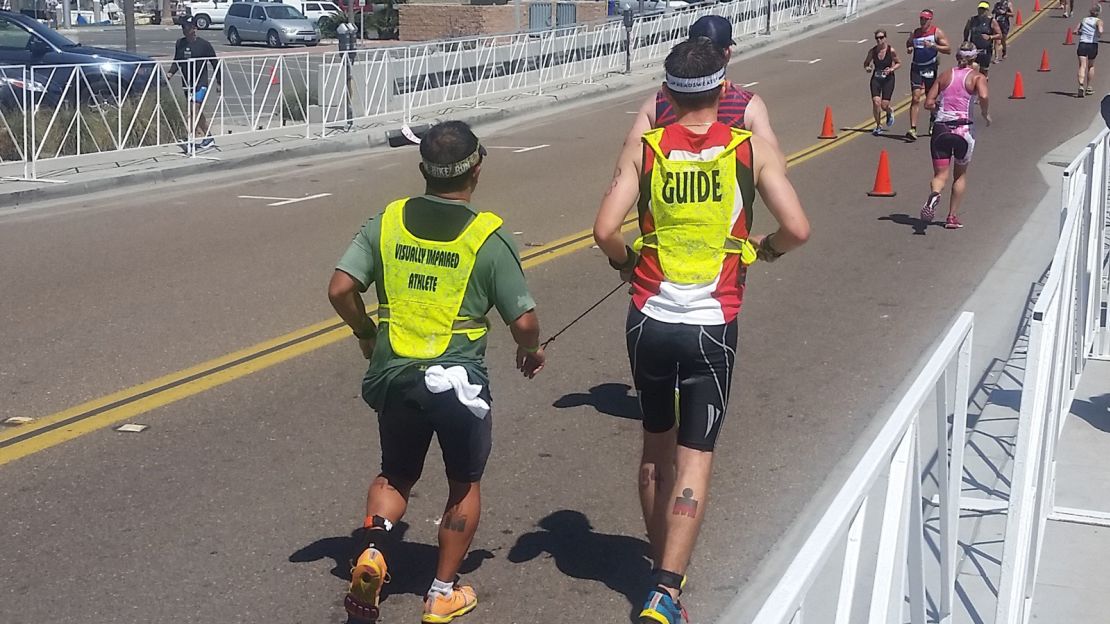
Dominic Bernardo agreed to be his guide for the race. He’s run a full Ironman before, in Arizona back in 2013. Back then, he focused on just himself. Training for hours by yourself, Bernardo says, is “mind-numbing.” It’s much different this time. Now he has someone to talk to while he’s thinking – and seeing – for two.
“He has to have an immense amount of trust in me as a guide, but I think it’s just like with any elite athlete, you have to have that rhythm, and so for us, we have to find that rhythm together,” Bernardo said.
“We’re the most efficient when we’re running at the same cadence. We’re pedaling at the same cadence but at the same pressure and smooth and efficiency. And the same thing in the water, taking our strokes at the same time. Any time that we can get in synch with one another, I think that that’s when we have our best results, our best training days.”
Those training days together are long (the pair had a 105-mile bike ride scheduled for the morning after CNN’s interview). And during the grind, it’s not just a physical struggle but also a mental one. If one of them complains, that negativity can rub off on the other.
“I can’t go forward without Dominic,” Somsan said. “Dominic can’t go forward without me. We are constantly checking on each other. We have to.”
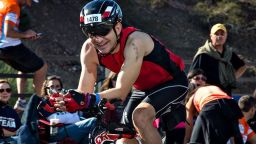
Somsan also wants to make something clear. It upsets him when Bernardo is referred to as a guide. Somsan prefers something else: An athlete.
“In many ways, he’s stronger than me, because he has to be,” Somsan said. “He’s got to do double the work, in terms of, like, watching for obstacles. At the same time, I have to do the same thing. I have to keep up. I have to also make sure I protect him because if he gets hurt, I can’t go forward.”
Over the course of nine months, Somsan and Bernardo have developed a great friendship training together. While Somsan will be completing this journey in front of his family, this experience hasn’t just enriched him.
“I’ve learned a lot about myself,” Bernardo said. “I’ve learned a lot about life, I’ve learned a lot about him, and I’ve said many a time that he might be blind, but in so many ways he can see more clear that I can. And I really believe that. He’s helped me in ways he probably will never know.”
Coming home
The final stretch down Ali’i Drive has a landmark banyan tree, signaling that the Ironman finish is near.
“I’m even getting a little emotional now just thinking about it,” Bernardo said. “I can’t wait to tell him here’s the banyan tree and here’s where we’re at and just listening to the crowd and being able to describe (it).
“For him, it’s a coming home. …It’s almost like (how) LeBron (James) went back to Cleveland and brought them a (NBA) championship. Michael’s going back to Hawaii. He’s going to do this and cross that finish line.”
Somsan’s hope, as he wrote in his essay, is that his story will inspire others “to never give up, and never be defeated by one’s circumstances.”
“We’ve been training really hard,” Somsan said. “This is – I don’t know – it’s almost like being an Olympian, when you go to the Olympics. It’s that moment that you’ll remember for the rest of your life.”




